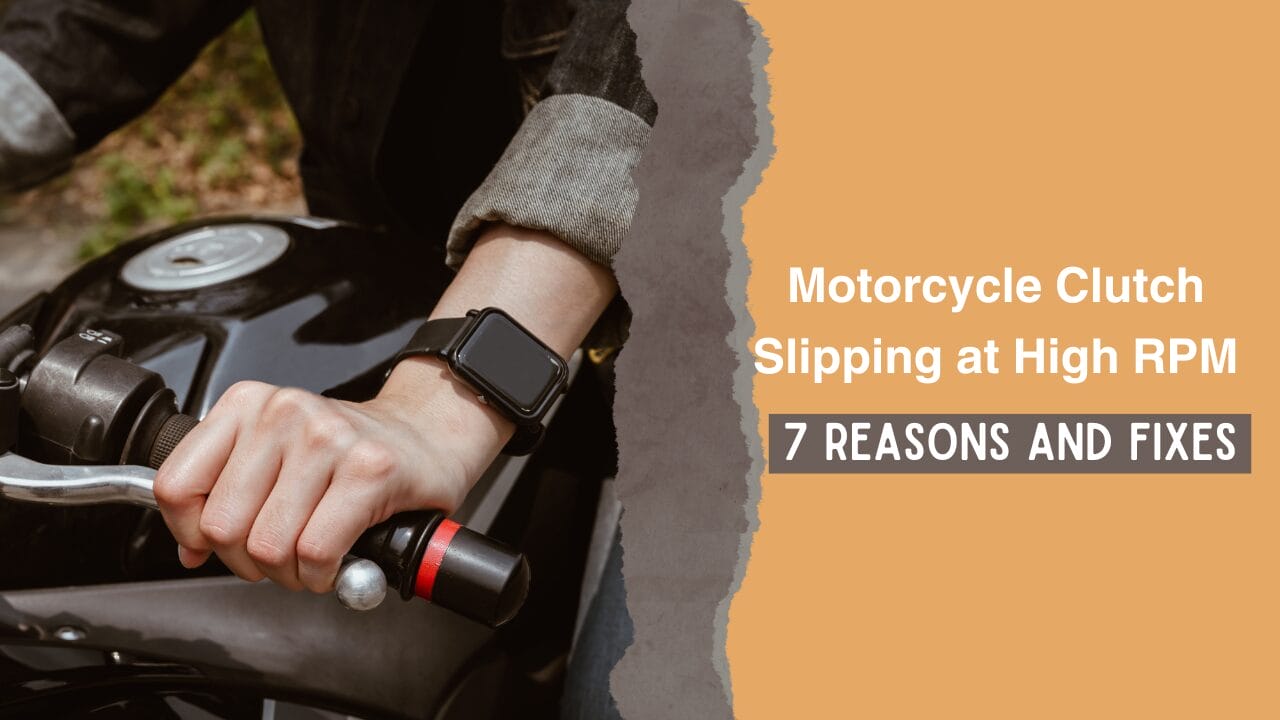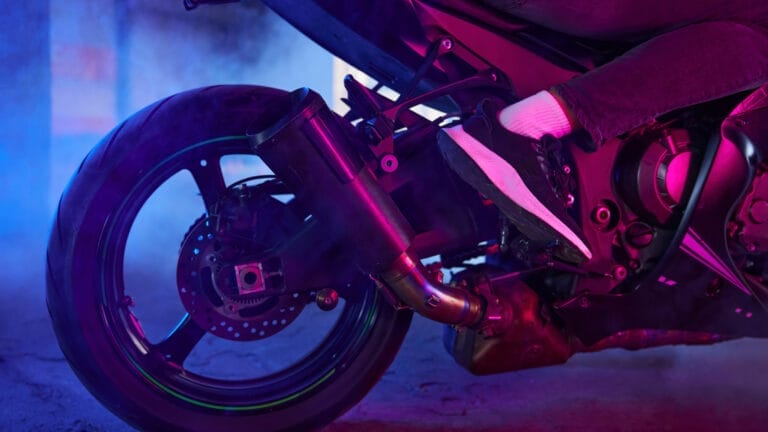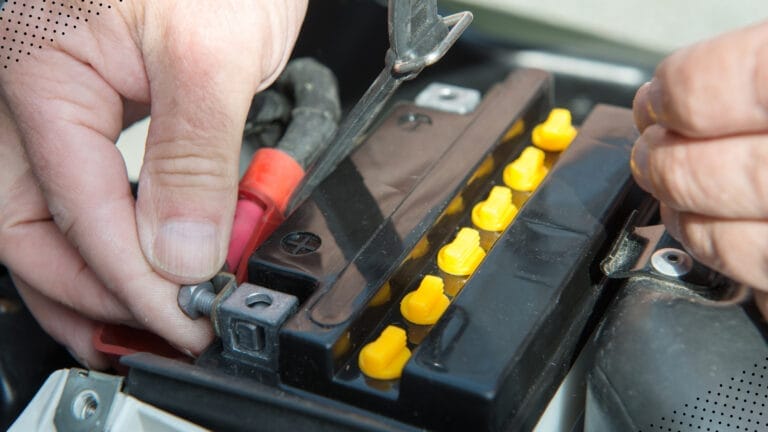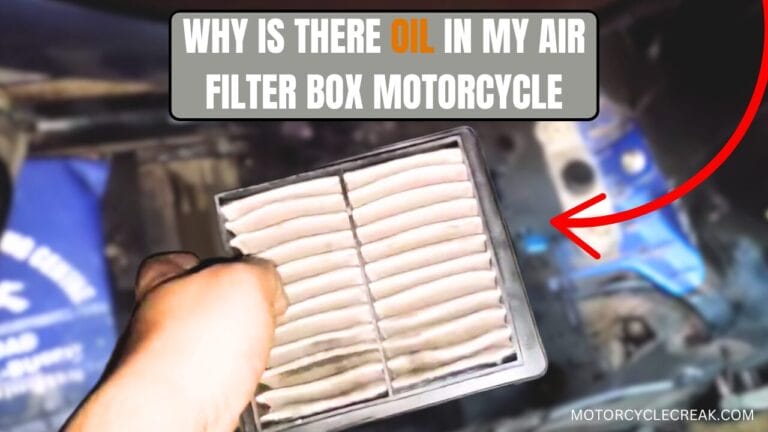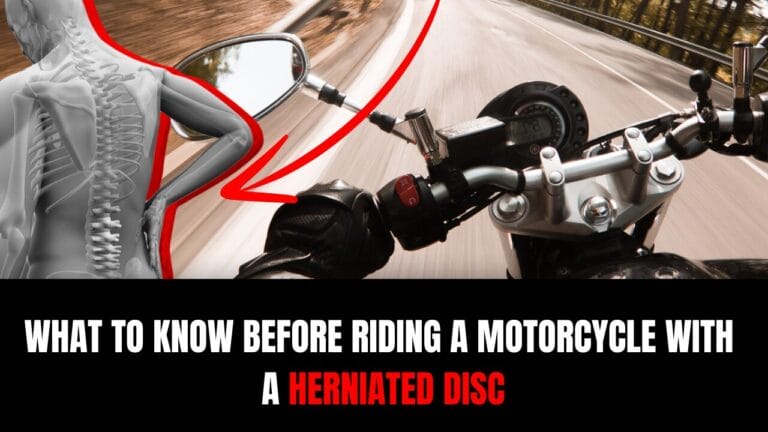Motorcycle Clutch Slipping at High RPM: 7 Reasons and Fixes
When your motorcycle’s clutch is slipping at high RPM, it will lead to permanent damage to your engine if untreated. So, you better fix it ASAP. But, what causes motorcycle clutch slipping at high RPMs?
The reasons include-
- Worn clutch plates
- Broken clutch springs
- Improper cable adjustment
- Contaminated clutch oil
- Using the wrong oil type.
To fix the issue, you’ll need to replace worn components (plates, springs, basket), clean/replace contaminated oil, and adjust cables properly. Now, how do you do all this? This guide explains everything about motorcycle clutch slipping. Please go through it.
Motorcycle Clutch Slipping at High RPM: Why Does It Happen?
The clutch transfers power from the engine to the transmission and ultimately to the rear wheel. But, when the clutch slips at high RPM, it means the clutch is not fully engaging or disengaging as intended.
Clutch location. Source
Here are the most common causes of clutch slipping at high RPM:
1. Worn Clutch Plates:
Clutch plates are friction discs that engage and disengage to transfer power. Over time, these plates become worn down due to normal wear and tear.
This reduces their gripping ability and causes slippage, especially at high RPM.
Worn down clutch plates. Source.
Solution:
Inspect the clutch plates for excessive wear or glazing. If your clutch plates look like the picture above, replace the clutch plate set.
2. Excess Oil/Grease on Clutch Plates (for Dry Clutches):
In “dry clutch” systems, excess oil or contamination on the clutch plates will lead to slippage. It occurs because the excess oil reduces friction between the plates.
Excess Oil/Grease on Clutch Plates.
Solution:
- Thoroughly clean the clutch plates and housing.
- Remove any oil or contaminants.
- Inspect for any oil leaks that may be causing the contamination.
3. Faulty/Broken Clutch Springs:
Clutch springs play a vital role in applying the clamping force to engage the clutch plates. That’s why weakened or broken clutch springs result in insufficient clamping force. This leads to clutch slippage at high RPM.
Clutch springs. Source.
Broken clutch springs. Source.
Solution:
- Inspect the clutch springs for any signs of wear or damage.
- Replace the clutch springs with new ones.
4. Issues with the Clutch Cable:
The clutch cable is responsible for actuating the clutch mechanism. If the cable is frayed, stuck, or improperly adjusted, it will prevent the clutch from fully engaging or disengaging. If the cable is too loose or too tight, it will also prevent the clutch from fully engaging or disengaging.
All this will result in slippage.
Motorcycle clutch cable. Source.
Solution:
- Inspect the clutch cable for any signs of wear, fraying, or sticking.
- Replace it if it’s severely damaged.
- Lubricate the cable if needed (if it’s having too much fraction in engaging).
5. Worn Clutch Basket/Hub:
The clutch basket (also known as the clutch hub) is the component that holds the clutch plates in place. If the basket or hub is excessively worn, it will cause the clutch plates to become misaligned or unable to engage properly. This surely will lead to slippage.
Worn Clutch Basket/Hub. Source.
Solution:
- Inspect the clutch basket or hub.
- Look for any signs of excessive wear or damage.
- If the clutch basket is worn out, replace it.
Watch the video below to assess whether your clutch basket is worn out or not.
6. Contaminated Clutch Oil (for Wet Clutches):
In “wet clutch” systems, contaminated clutch oil will cause the clutch plates to slip. As already cited in 2022 scientific study, uncontaminated clutch oil is essential for the best performance of any type of engine and clutch system.
Contaminants such as metal particles or moisture in the oil can reduce the oil’s ability to transfer power effectively. This causes clutch slippage to occur, especially in high engine RPMs.
Contaminated clutch fluid reservoir. Source.
Solution:
Perform a clutch oil change by following the below tips:
- Locate the clutch fluid reservoir and the oil bleeding nipple (usually a small bolt or valve).
- Have a 10mm wrench ready to loosen the bleed nipple. Also, have a clutch bleeding kit (a plastic tube and bottle) ready.
- loosen the bleed nipple slightly with the 10mm wrench. It will allow old fluid to drain.
- Keep loosening the nipple until the old dark fluid is fully drained out.
- When the old dark clutch fluid fully drains, top up the new DOT 4 brake fluid.
Does this process seem a bit complicated to you? Use the video guide below to easily understand this.
7. Using the Wrong Motorcycle Oil:
Using the incorrect type or viscosity of oil in a wet clutch system will also lead to clutch slippage. According to scientific research on vehicle clutches, the wrong type of oil damages the system in one way or another.
In most cases, the wrong oil will not provide the necessary friction characteristics. This will cause clutch slippage.
Solution:
- Stick to using the recommended oil type that your motorcycle brand suggests.
- The oil you use should have the viscosity specified by your motorcycle manufacturer for the clutch system.
Use the video guide below to understand better which type of oil you should use for your motorcycle clutch.
Early Symptoms of Motorcycle Clutch Slipping at High RPM (Know and Fix Before It Happens)
Identifying and addressing the early symptoms of clutch slippage will prevent further damage. Here are some common early warning signs to watch out for:
1. High Revving
If you notice that the engine revs higher than usual without a corresponding increase in speed or acceleration, it will be an indication of clutch slippage.
2. Engine Stalls or Lurches Unexpectedly:
A slipping clutch will cause the engine to stall or lurch unexpectedly. This especially occurs when accelerating or shifting gears.
3. Difficult Gear Shifts:
If you experience difficulty shifting gears smoothly, it might be a sign of clutch slippage (because of improper engagement).
4. Decreased Gas Mileage:
A slipping clutch will cause the engine to work harder, resulting in decreased fuel efficiency and lower gas mileage.
5. Poor Acceleration:
If your motorcycle struggles to accelerate as it should, especially at higher RPMs, it is due to clutch slippage and a loss of power transfer.
6. Burning Oil Smell:
A strong burning oil smell indicates that the clutch is slipping. The slipping causes excessive friction and heat buildup.
Related Questions
Check out the queries below! They might pop-up in your mind anyway.
Does the issue of clutch slipping at high RPM occur on new bikes?
Clutch slipping at high RPM occurs on new bikes because of improper break-in procedures. Or, it happens if you engage the clutch extremely suddenly instead of doing it slowly. However, it is very common on older bikes as the clutch components wear over time.
the issue of motorcycle clutch slipping at high RPM life threatening?
Clutch slippage at high RPM is not directly life-threatening all the time. But, it surely leads to dangerous situations on the road. The loss of power transfer in the engine might cause your bike to collapse on the road. If this happens, it’s surely legal.
Can I fix the motorcycle clutch slipping at high RPM issue in a DIY fashion?
Yes. The common causes of motorcycle clutch slipping are worn plates, faulty springs, and cable issues. You can diagnose and fix these through DIY component replacement.
Final Takeaway
In conclusion, motorcycle clutch slipping at high RPM can have various underlying causes. These range from worn clutch plates and faulty springs to improper cable adjustment or contaminated clutch oil. u003cbru003eu003cbru003eNow, these issues are easily fixable most of the time. The cost to fix these will cost anywhere between $100 to $500. So, don’t take any risks by leaving the issue of clutch slipping unattended. u003cbru003eu003cbru003eOur suggestion is that you stop riding the bike immediately after you feel this issue occurring. First understand the problem by using our guide here. Then, follow our suggestions to quickly fix it.

